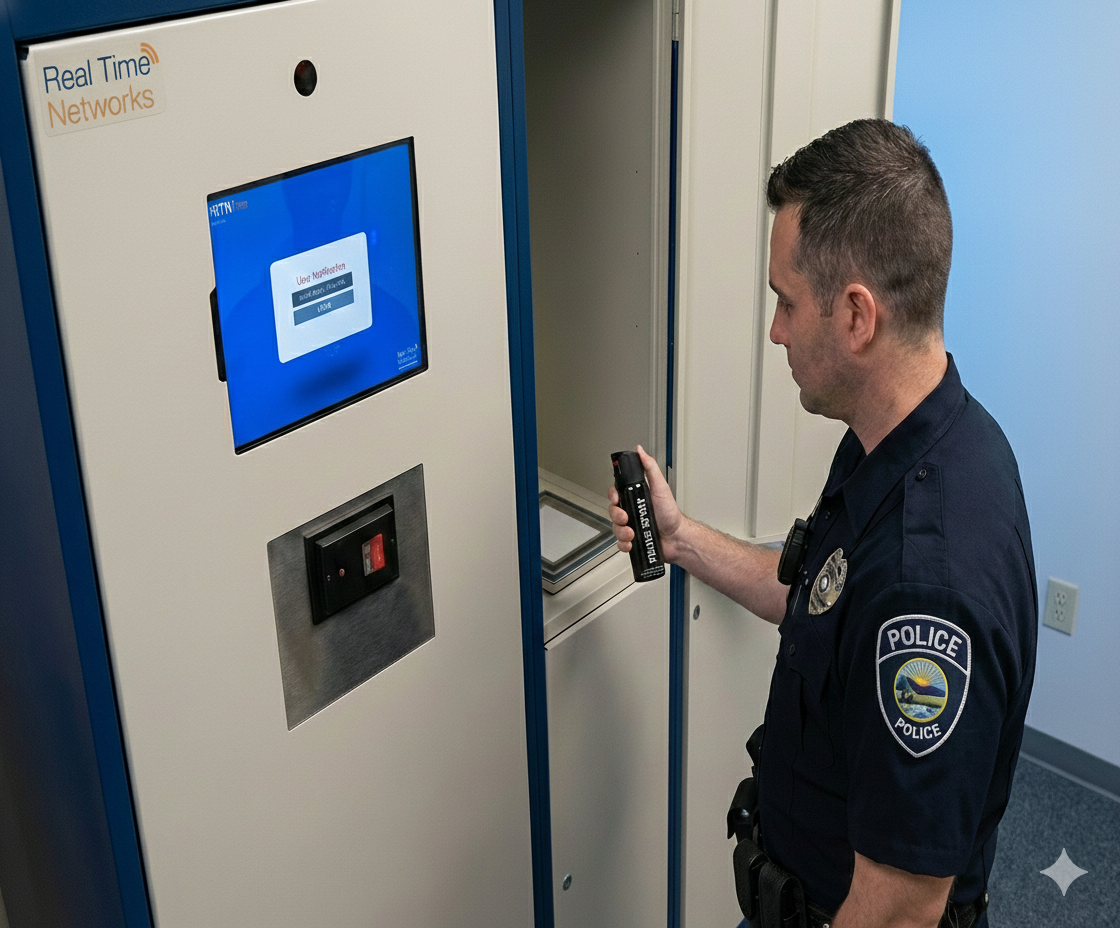By Jay Palter | August 8, 2024
Hybrid and remote working offer many benefits, but companies must overcome many challenges when using one of these work models. Reliable hybrid or remote working practices require support in the form of new strategic guidance, corporate policies, and technology. Physical asset management systems are among the most effective remote work solutions, potentially addressing various remote working challenges.
Interest in them is growing. The global market for smart asset management systems is projected to grow 13.70% between 2023 and 2030 and is expected to be valued at $60.9 billion.
This article analyzes the challenges remote working organizations face, using insights from leading business experts, and details how the single greatest underlying challenge is simply knowing who is using which equipment at a given time. Then, it explains how physical asset management systems work and suggests ten ways these systems can make life easier for companies struggling to manage remote workers.
The '5 C' Challenges of Remote Working Without Smart Asset Management Systems
Martine Haas is a leading business management expert and the Director of the Lauder Institute for Management & International Studies at the Wharton School of Business. She's studied remote working practices for over two decades.
As the COVID pandemic unfolded, Haas and her team identified five challenges—what she dubbed the 5 C's—that hybrid and remote work teams needed to address to succeed. They were communication, coordination, connection, creativity, and culture.
Communication
This is the first of three primary 'C' challenges. First, many people had to learn new telecommunication systems, like Zoom or Teams, and new working habits to go with these systems.
Now that employees are returning to the office on hybrid schedules, they must learn new habits. For example, how do you treat employees at home and in the office equally on video calls? How do you run a meeting when some people can talk in the same room and others must call in?

Coordination
Hybrid teams risk having "faultlines" emerge between in-person and remote workers. Despite all of our technology, coordinating with remote workers takes extra effort, which is the price we pay for flexibility. Workers can get used to who is in the loop in different decisions and unintentionally marginalize workers they aren't used to seeing everyday face-to-face.

Connection
The last primary 'C' is that it is also difficult for employees to feel connected to one another and form effective teams when they don't know who is in or out of the office on a given day. As a result, people may feel excluded, or if they're one of the few working in the office alone, they might feel unsafe.
Learn More: Employee Safety Best Practices for Hybrid Workplaces.

Creativity
Teams that can communicate, coordinate, and connect effectively will be more creative than those disconnected by hybrid working schedules. Creativity might suffer if the first three fundamental challenges aren't addressed.

Culture
As with creativity, another challenge of remote working is building an effective business culture. So much of modern business strategy depends on an effective culture. Hybrid working could undo much of the culture-building businesses achieved before the pandemic.
Underlying all these is a fundamental challenge many business leaders didn't have to worry about before hybrid working became dominant: the need for real-time insight into who uses which business assets in which locations. All 5 C's, especially communication, coordination, and connection, depend on this information. That uncertainty over employee locations also led to new questions about employee safety.

Smarter Asset Management Technology for Safer Hybrid Working
The consulting firm McKinsey & Co. found that the pandemic has accelerated the adoption of new practices, like hybrid working, and new technologies, including remote asset tracking systems. Their report included a survey finding that 54 percent of executives expected hybrid working and the technology to support it to become a permanent part of their company's operations.
Smart asset management systems use wired and wireless sensors and a digital access control terminal attached to lockers to monitor devices in storage and keep precise records of all devices in use in the field. The system builds records in real-time to keep everyone accountable.

Get full control of your assets, streamline operations, and increase productivity with a smart asset management system.
Overcome 10 Hybrid Workplace Safety Challenges With Physical Asset Management Systems
Physical asset management systems provide robust security measures to protect valuable assets from theft or unauthorized access. Organizations can monitor who accesses specific assets and when by implementing secure storage solutions such as smart lockers. Features like biometric authentication, RFID asset tracking, and automated alerts for unauthorized access ensure that only the correct personnel can handle valuable equipment. That helps keep everyone accountable and minimizes the risk of asset loss.
Remote work significantly complicates real-time asset tracking if you rely on manual processes. Physical asset management systems use strong access controls and asset surveillance to track every interaction with the locker system. Access control terminals can deploy various means of authentication, including biometrics, swipe cards integrated with your building security, or RFID tokens. You can also find access terminals with a camera for added asset accountability.
Asset surveillance systems are networks of sensors and computer controllers built right into lockers. They monitor equipment signed in or out of lockers. If a user accidentally takes the wrong item or forgets an essential component of their full kit, the system will alert them on the access terminal or via email. Content surveillance systems can also notify supervisors if a disgruntled employee tries logging a device returned but leaves the locker empty.
Physical asset management systems enforce strict access control policies using technologies such as biometric authentication, PIN codes, or swipe cards. They can also use multifactor authentication by combining two or more of those methods. Smart asset management systems can also generate asset management compliance reports, showing detailed records of asset usage and access history. This ensures that organizations can meet regulatory standards while maintaining a secure working environment.
Learn More: What is a Physical Access Control System (PACS)?
You can buy all of the latest, proven technology in the world, but if you can't guarantee your people are working together effectively, then productivity will plummet. Physical asset management systems facilitate better communication and coordination by providing centralized platforms where asset information is accessible to all relevant stakeholders. Real-time data on asset status, location, and availability can be shared, ensuring everyone is on the same page. Automated notifications and alerts keep teams informed about asset checkouts, returns, and maintenance schedules, improving overall coordination.
Efficiently distributing keys and business equipment is a logistical challenge in remote work scenarios. For example, when onboarding a new, remote employee, you must provide them with a laptop, phone, and potentially other devices.
Key management systems control access to physical keys and hold equipment around the clock, ensuring only authorized personnel can check them out. Equipment managers, new hires, and anyone else, like technicians, who need access to the lockers can access them on their schedule. These systems also keep detailed access logs. Automated alerts can notify managers if people do not pick up or return by a set time.
Physical asset management systems help schedule and track remote asset maintenance activities. At the most basic level, they can send automated reminders for teams to follow service and update schedules. You can also provision smart locker systems with ‘maintenance lockers.’ When a worker reports a problem with a device at the locker system’s terminal, the system unlocks the maintenance locker and prompts them to deposit the faulty asset.
The system then alerts the technical support team with the reported error. The maintenance management system will only unlock for a team member so another user doesn’t accidentally put the device back into circulation.
Learn More: Optimizing Asset Maintenance Management for Growth
Physical asset management systems enhance emergency response and recovery efforts by ensuring that critical equipment is always ready and accessible. With mobile, hybrid workforces, you may not always be able to plan for the same personnel in your facilities. Your support systems need to be flexible and ready to provide emergency response materials 24/7 to whomever is present.
Smart asset management systems can prioritize access to emergency assets and provide real-time information on their availability and condition. Detailed records of asset usage during emergencies help organizations analyze their response and revise emergency action plans for future events.
Managing inventory effectively and consistently is challenging in remote work environments. Physical asset management systems provide tools for accurate inventory management, including real-time tracking of all managed devices and automated inventory logging. These systems help maintain optimal inventory levels, prevent overstocking or stockouts, and ensure that all assets are accounted for, charged, and ready for their next use. By automating inventory management processes, organizations can save time and reduce errors.
Physical asset management systems provide insights into how assets are used, identifying underutilized or overused equipment. By analyzing usage patterns, organizations can make informed decisions about asset allocation, purchasing, and retirement. This ensures better workplace efficiency, reduces unnecessary expenditures, and maximizes the value of existing assets.
Training employees on proper asset management practices is crucial, especially in remote work. Physical asset management systems support training initiatives by providing clear guidelines and automated processes for asset handling. These systems can offer training modules, track employee compliance with asset management protocols, and provide feedback on usage patterns. This helps employees adapt to new critical asset management practices, ensuring they follow best practices and maintain organizational standards.
Learn More: How to Design Better Physical Security Training Programs
Explore How Smart Asset Management Systems Tackle Remote Work Challenges.
Gain insights and practical solutions from our comprehensive guide.
[Available for download}
Subscribe to our blog

Jay Palter
Vice President of Marketing & Partnerships




